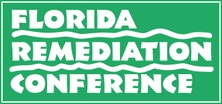Derek Pizarro, CPG

Presentation Title:
Reductive Dechlorination with Concurrent Sequestration of PFAS and 1,4-Dioxane in a Large Commingled Plume at a Former Manufacturing Facility
Derek Pizarro, CPG, Senior Remediation Geologist, AST Environmental, Inc.
Abstract:
Background/Objectives.
The 3.85-acre confidential site, located in a heavy industrial/commercial area in New Jersey, includes an 82,500 square-foot manufacturing building where electroplating, and other operations were conducted for nearly 50 years. Site investigation activities conducted from 2020 to 2021 in overburden and bedrock groundwater detected high levels of chlorinated ethenes, including trichloroethene (TCE), cis-1,2-dichloroethene, vinyl chloride, and 1,1-dichloroethene, as well as high levels of per- and polyfluorinated substances (PFAS) and 1,4-dioxane impacts to soil and groundwater. Regional geology in the vicinity of the site is characterized by an upper unit consisting of river alluvium and eolian deposits of Holocene Age, underlain by glacial unconsolidated deposits (clay, silt, sand, and gravel) of Pleistocene Age, and finally bedrock of the Passaic Formation, consisting of thin bedded shales, mudstones, and sandstones. Unconsolidated deposits at the site are comprised predominantly of glacial till. A clay layer, continuous across much of the site, is observed midway through the till from approximately 15 feet to 20 feet below the ground surface. Groundwater elevations are monitored in three zones: shallow till (5 to 20 feet below ground surface [bgs]) above the clay layer); lower till and underlying highly weathered bedrock (20 to 35 bgs); and the upper competent bedrock (60 to 80 feet bgs). The primary objective at the site is the reduction in mass, concentration, and mobility of chlorinated ethenes that have consistently been detected in groundwater at levels ranging from a few parts per billion to over 100 parts per million. Secondary and tertiary objectives are the sequestration of a portion of PFAS and the biodegradation of 1,4-dioxane.
Approaches/Activities.
Because PFAS are highly recalcitrant to in-situ destruction technologies, and because chlorinated ethenes and 1,4-dioxane typically require sequential biodegradation technologies under respectively reducing and oxidizing conditions, simultaneous remediation of these target compounds is rarely attempted. However, an acceptable interim remedial approach was identified whereby Remediation Products, Inc.’s (RPI’s) Trap and Treat® CAT 100, a proprietary mixture of virgin activated carbon impregnated with metallic iron, and a suite of complex carbohydrates, yeast extract, and bacteria, would be injected into the saturate zone to, 1) sequester a portion of the target compounds, 2) enhance the abiotic and biotic reductive dechlorination of chlorinated ethenes, and 3) persist within anaerobic/aerobic transition zones to promote the biodegradation of 1,4-dioxane. An injection design was subsequently prepared to identify the dose of CAT 100 necessary to achieve these objectives. The design was based on the collection of 667 soil samples and 144 groundwater samples over a 45,000-square-foot area where chlorinated ethenes and PFAS were detected at the highest levels. Soil samples were collected on 1 to 3 foot intervals while groundwater samples were collected from temporary shallow and deeper wells to the top of bedrock. A series of “heat” maps were generated to identify areas of concentrated impacts, and to develop the dosage of CAT 100. A total of 900 locations were tentatively identified for the injection of a total of 125,800 pounds of iron-impregnated activated carbon, 91,750 pounds of pea fiber, 4,565 pounds of yeast extract, and 245 pounds of bacteria in 214,000 gallons of water. The injection work was completed over a 6-month period during the renovation of the building.
Results/Lessons Learned.
Groundwater monitoring results indicate that reducing conditions have been engendered, as planned, in all the targeted injection areas, with 90 to 99 percent reduction in TCE in most of the target wells. Remediation performance monitoring has been conducted after the completion of the injection program and includes the full suite of chlorinated ethenes, PFAS, and 1,4-dioxane. Complete details regarding challenges and current data will be provided.
Bio:
Derek Pizarro, CPG is a Senior Remediation Geologist for AST Environmental, Inc. He is a Certified Professional Geologist and has 21 years of experience in environmental applications, specifically fractured bedrock characterization; contaminant transport studies; permeable reactive barrier (PRB) design; and reagent bench-scale testing and design for environmental sites and industrial process waste streams. Derek has contributed to the testing and selection of contaminant remedies for multiple CERCLA sites, projects under the Pennsylvania Act 2 land recycling program, and hundreds of privately funded cleanups. Previously, Derek served as General Manager and Environmental Products Director for a chemical manufacturer, developing chemistries for treatment of inorganic contaminants, sediment applications, and injectates for use in PRBs.
